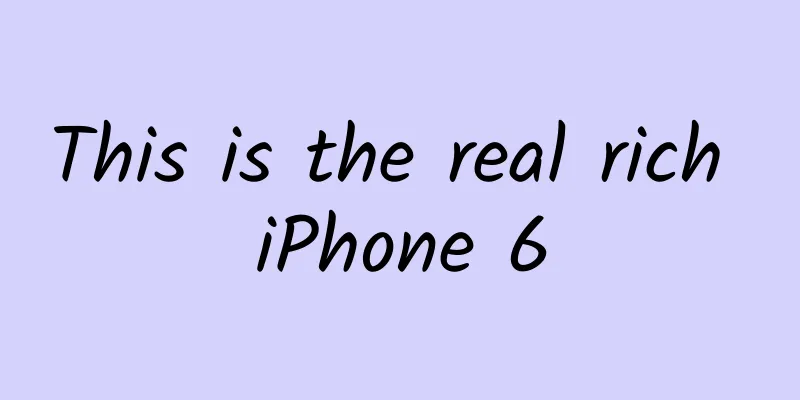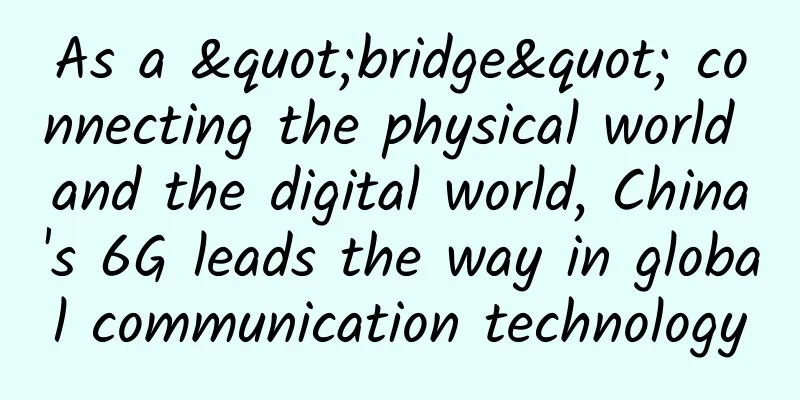Large-screen cloud collaboration creates diverse value, LeTV Cast won the "Industry Ecosystem Contribution Award"

|
Ecologization is an important sign of industrial maturity. It not only means that enterprises can each get what they want, but also means that industrial development is entering a period of prosperity. In recent years, with the large-scale popularization of terminals such as smart TVs, the domestic digital TV industry has also grown. According to the "2021 National Radio and Television Industry Statistical Bulletin" of the State Administration of Radio and Television, as of the end of 2021, the number of Internet TV (OTT) users in the country has reached 1.083 billion. At the same time, since the outbreak of the epidemic, user consumption habits have also changed. According to Cool Cloud data, the household penetration rate of smart large-screen TVs in China has reached nearly 84% in 2021. Against the backdrop of the rise of large-screen TVs, the connection and expansion of content and application ecosystems between large and small screens has not only become a rigid demand for hundreds of millions of users, but also hides the industry's future of digging deep into the commercial value of OTT, releasing mobile terminal content, and network terminal computing power. Recently, the 2022 China Digital TV Festival hosted by the China Television and Video Association came to an end. At the meeting, OTT industry experts and corporate leaders had an in-depth discussion on the current status and future of the industry, and the organizers commended companies with outstanding performance in the field of digital TV. Among them, LeTV Technology, which is based on screen projection services and is committed to connectivity, won the "Industry Ecosystem Contribution Award". Building a bit link between OTT and mobile Internet As smart TVs enter thousands of households, screen projection has gradually become a necessary "skill" for users. Data shows that one out of every nine users who watch TV uses screen projection; 44.8% of users connect to the TV through the screen projection function of their mobile phones or tablets; according to screen projection statistics, tens of millions of users use screen projection every day, and the average number of screen projections is 7 times a day, with a duration of 2 hours. During the previous Olympics, European Cup and Winter Olympics, mobile phone screen projection has become a new way for many spectators to watch the games. In the living room entertainment and life scenes, in the popular phenomena such as "Liu Genghong Girl" and "Wang Xinling Boy", screen projection has become a bridge connecting content applications and large screens, and is a new "urgent need" spawned by the "stay-at-home economy". On the one hand, the demand for screen projection stems from the difference in experience between large and small screens. TVs have large screens, excellent audio-visual effects, and a more immersive experience, making them the best medium for watching movies and TV series at home. However, this is also why membership fees for video platforms are often more expensive on large screens. In addition, TVs face a more stringent regulatory environment, with less prosperous content and applications. At the same time, large screens are far less interactive than touch screens on smartphones. Screen projection can solve the shortcomings of small screens' poor audio-visual experience, and can also make up for the deficiencies in large screen content, applications, membership rights, and interaction. On the other hand, the huge traffic pool of the OTT industry can alleviate the growth anxiety caused by the peak of the mobile Internet scale. The "Mobile Application Operation Growth Insight White Paper" shows that as of December 2021, the number of mobile Internet users in my country reached 1.029 billion, and 99.7% of Internet users used mobile phones to access the Internet. Mobile terminals need new scenarios to expand, and screen projection can break through the barriers between them and smart TVs, which already have a large penetration rate, and bring more possibilities at the industrial level. From the user's perspective, the rigidity of screen projection demand is a natural result of the pursuit of newer interactive methods in the process of online consumer entertainment. From the industry's perspective, it is an effective measure to break the limitations of a single screen and to tap into more value through linkage and collaboration between screens under the trend of increasingly emphasizing scenario-based development. Therefore, screen projection, which is expected to serve as the infrastructure and underlying application of AIoT, 10,000-screen interconnection in the future, has attracted attention from all parties. Terminal manufacturers, video platforms, operators, application parties, etc. have all made layouts in screen projection technology and products, striving to control multi-screen interactive users in their own ecosystem. For example, among terminal manufacturers, in addition to supporting AirPlay, Miracast, DLNA and other connection protocols, some TV and box manufacturers are also building their own screen projection ecosystem based on their own terminals. For example, Coocaa Technology launched the screen projection products Share Screen APP and Share Screen Mini, and Changhong and iQiyi jointly launched the AI screen projection TV. Huawei, Xiaomi, OPPO and other companies with dual advantages of mobile phones and TVs have also made innovations in screen projection technology. Taking Huawei as an example, the screen projection scenarios built around its mobile phones and smart screen products can realize functions such as one-touch screen projection, mobile phone screen control, smart dual projection, and remote screen projection; while OPPO can realize four-way screen projection, background projection, screen projection, one-touch flash projection, and NFC-free screen projection between its mobile phones and smart TV products. Video platforms represented by iQiyi, Youku and Tencent Video have also made many explorations in the screen projection hardware, such as iQiyi's TV Fruit, Tencent's Jiguang Quickcast, Alibaba's Tmall Magic Cast, etc. As for operators, China Mobile has launched screen projection hardware and Home Cast, and China Telecom has also launched a dedicated screen projection software Tianyi Cast. However, we have to admit that third-party applications represented by LeTV Cast are still the most important players in the screen casting market. Without the constraints of the platform and the ecosystem, they are the key to building the industrial chain and creating user experience. It is reported that LeTV Cast has cooperated with nearly 100% of the global brands on the large-screen side, allowing all apps, mobile phones and TV large screens to wirelessly interconnect across brands, regions and systems. Connecting the large and small screen ecosystems In 2013, on the eve of the explosive growth of OTT, LeTV Cast did not choose the popular hardware track, but instead tackled the more challenging software track. Thanks to the adaptation to mainstream chips, LeTV Cast successfully reached cooperation with 90% of the OTT and projection manufacturers in the market at that time. A year later, although the OTT market fell into a trough due to revenue not meeting expectations, LeTV Cast became one of the few winners at the time because it had the golden key of "three screens in one". At present, the cumulative number of users of LeTV Cast has exceeded 200 million. It has built a cross-network, cross-terminal and cross-system projection connection for 280 million large-screen terminals and 1.5 billion mobile devices. In a sense, the greatest value of LeTV Screencast is the connection value demonstrated by its screencasting technology. Specifically, its connection value is mainly reflected in the following three aspects: First of all, LeTV Cast is a connector between terminals. As a company whose main business is wireless screen casting, its developed Lelink realizes cross-network transmission and multi-channel transmission, clearing the way for users to enjoy large-screen services. Taking smartphones as an example, with the help of Lelink, users can not only project pictures, documents, web pages, videos, audio and other content to the large screen, but also realize real-time simultaneous display of large and small screens. Such a convenient screen casting service greatly facilitates user use. Secondly, LeTV Cast is the connector between content and terminals. In response to users' demand for high-quality content, LeTV Cast is actively connecting more high-quality content while clearing the bottlenecks between terminals. At present, LeTV Cast has reached cooperation with nearly 10,000 audio and video APP manufacturers such as Douyin, Kuaishou, and Bilibili. Among them, the former's accumulated hundreds of millions of users will enjoy the rich content provided by the latter. Finally, LeTV Cast is the connector between software and hardware. LeTV Cast's partners include many hardware manufacturers. Data shows that LeTV Cast has covered nearly 100% of TV, projector and box brands on the market. For these brands, their cooperation with LeTV Cast can, on the one hand, help their products adapt to market demand, and on the other hand, help hardware products iterate and upgrade. As the screen casting software with the highest market share, LeTV Cast can not only reflect user needs to hardware manufacturers, but also provide them with full support on the technical side. From the perspective of the industrial ecology, it is precisely because of software connections such as LeTV Cast that hardware manufacturers, content service providers and users can each get what they need, and the entire industry can each get what it needs, forming a healthy ecology. Although OTT has entered a new stage of sustained high growth in the operation of smart large screens, the connection value brought by LeTV Cast cannot be ignored. At the same time, with the development of technology, LeTV Cast has also injected vitality into the industrial ecology through continuous innovation. Leading the industry to the vast sea of "millions of screens connected" LeTV Cast was recognized by industry leaders at the China Digital TV Festival and received the Industry Ecosystem Contribution Award, which is due to the "ecosystem future connected by screens" it has pointed out for the industry. Using the power of connection to penetrate the convenience of computing power and break through the barriers of interaction, the concept of LeTV Cast has broken through the theme of connection between large and small screens, and depicted a cross-screen ecological landscape connected by screen casting. The earliest screen projection application was to connect to WiFi through a local area network, initiate screen projection on the mobile phone, and play it on the big screen. This is the scenario that users are most familiar with, where the computing power of a mobile phone is used to empower the big screen through a local area network. Today, LeTV Cast has launched cloud casting and cloud mirroring through continuous research and development and continuous thinking. It empowers the large screen through the endless computing power of the cloud and squeezes the capabilities of cloud computing to the extreme to serve the large screen. In terms of interaction mode, LeTV Cast supports diversified cross-screen interaction methods, thus achieving rich and diverse interactions. For example, there is a screen casting code option on the screen casting entrance, and you can also cast the screen through NFC casting, smart hardware gateway voice control, etc. After solving the problem of connection computing power interaction, LeTV Cast has the confidence to carry out the screen casting business to the end. In LeTV's future, with the help of 5G, AIoT and other technologies, and with the support of screen projection capabilities, large screens will move beyond simple living room scenes, break through barriers between more industries and applications, and realize the interconnection of all things with screens, completely subverting today's learning, life and production methods. For example, LeTV Screencast has long seen the huge commercial value of large screens in corporate scenarios, and realized that screencasting has become a rigid demand for corporate meetings. As long as the threshold for screencasting is low enough and the screencasting experience is good enough, more and more people will use screencasting for meetings, and the number and duration of screencasting will be infinitely magnified. In terms of the layout of large corporate conference rooms, LeTV Screencast has formed cooperation with more than 30 large companies including Baidu, Meituan, and Kuaishou, covering more than 30,000 corporate conference rooms. This is another example of screencasting empowering OTT large-screen transformation and scene expansion. It is understood that LeTV Cast will comprehensively upgrade its original product system this year, taking conference projection as the entry point, and creating an offline and online integrated cloud collaboration solution based on large screens, in order to reduce costs and improve efficiency for tens of millions of small and medium-sized enterprise conference rooms. Users can hold a meeting with multiple people and project the screen together at any time by scanning the QR code on WeChat on their mobile phones or entering the projection code on the computer web page; switch presentation files at will, present cloud content infinitely, and collaborate efficiently on multiple tasks; collaborate in real time anywhere, whether it is a local near-field meeting or a remote meeting, to create a high-energy cloud collaborative discussion space. In addition to watching movies and working, screen projection in scenarios such as education, games, hotels, and car computers is expected to become a rigid demand in the near future, becoming an Internet infrastructure that connects network islands and breaks down scene barriers. From an ecological perspective, compared with the cooperation with content service providers and hardware manufacturers, the new service launched by LeTV Cast is actually exploring the use of large-screen terminals and enriching the existing OTT ecological system. For content service providers and hardware manufacturers, LeTV Cast, which embraces cloud technology, is also expected to inject new impetus into them and promote the diversification of the entire industry ecology. In the new development stage of smart large-screen continuous operation and high growth, the development of the digital TV industry still needs the ability to connect. To some extent, the connection capabilities of companies such as LeTV Cast determine the ceiling of the development of the large-screen market. Only by continuously improving the connection capabilities can the commercial pie of the large-screen market continue to grow. As a winner of Toutiao's Qingyun Plan and Baijiahao's Bai+ Plan, the 2019 Baidu Digital Author of the Year, the Baijiahao's Most Popular Author in the Technology Field, the 2019 Sogou Technology and Culture Author, and the 2021 Baijiahao Quarterly Influential Creator, he has won many awards, including the 2013 Sohu Best Industry Media Person, the 2015 China New Media Entrepreneurship Competition Beijing Third Place, the 2015 Guangmang Experience Award, the 2015 China New Media Entrepreneurship Competition Finals Third Place, and the 2018 Baidu Dynamic Annual Powerful Celebrity. |
<<: Ultra-portable display Slidenjoy trial notebook external perfect match
>>: Glass-integrated fingerprint recognition makes buttonless iPhone possible
Recommend
ASO optimization tool is a data-based operation and promotion method!
The Weituo ASO optimization platform has recently...
32 amazing cross-sectional images revealing the unknown side of things
There is an old saying that goes, "It is eas...
If I give you four chances to travel through time, would you dare to have a blood transfusion?
Should I take this risk or that risk? Compilation...
SEO article standards, what are the requirements and specifications for SEO article writing?
Many companies have many requirements for recruit...
Coffee does not produce energy, it is just a transporter of energy.
Coffee is native to north-central Africa and belo...
"Nobel Prize Vane" - 2023 Lasker Award announced! AlphaFold developers and others on the list
Known as the "Nobel Prize weathervane",...
How to plan product selling points to be more attractive?
Let’s first take a look at what a good product ad...
How much does it cost to customize a logistics mini program in Changge?
How much does it cost to customize the Changge Lo...
Comparison of 150,000-level square box road light off-road SUVs: Jetour Shanhai T1 VS Haval Raptor
Jetour Shanhai T1 has launched three plug-in hybr...
How can content operations advance from zero foundation to the workplace?
First, let’s interpret the first part: The past a...
Introduction to HTTPS encryption methods and their advantages and disadvantages
Symmetric encryption Symmetric encryption refers ...
Can a small screen also be used to create a "blockbuster"? Let your photos achieve the "depth of field effect" on your phone
1. Summary On iOS, when users set system wallpape...
How much can AI help you fill in your college entrance examination application form? Just a supplement!
□ Zhang Gailun, a reporter from Science Times The...
Wuhuang Bazhahei: Wow! They said they could “pick down” the moon for us to see?
The most romantic dream is nothing more than &quo...









